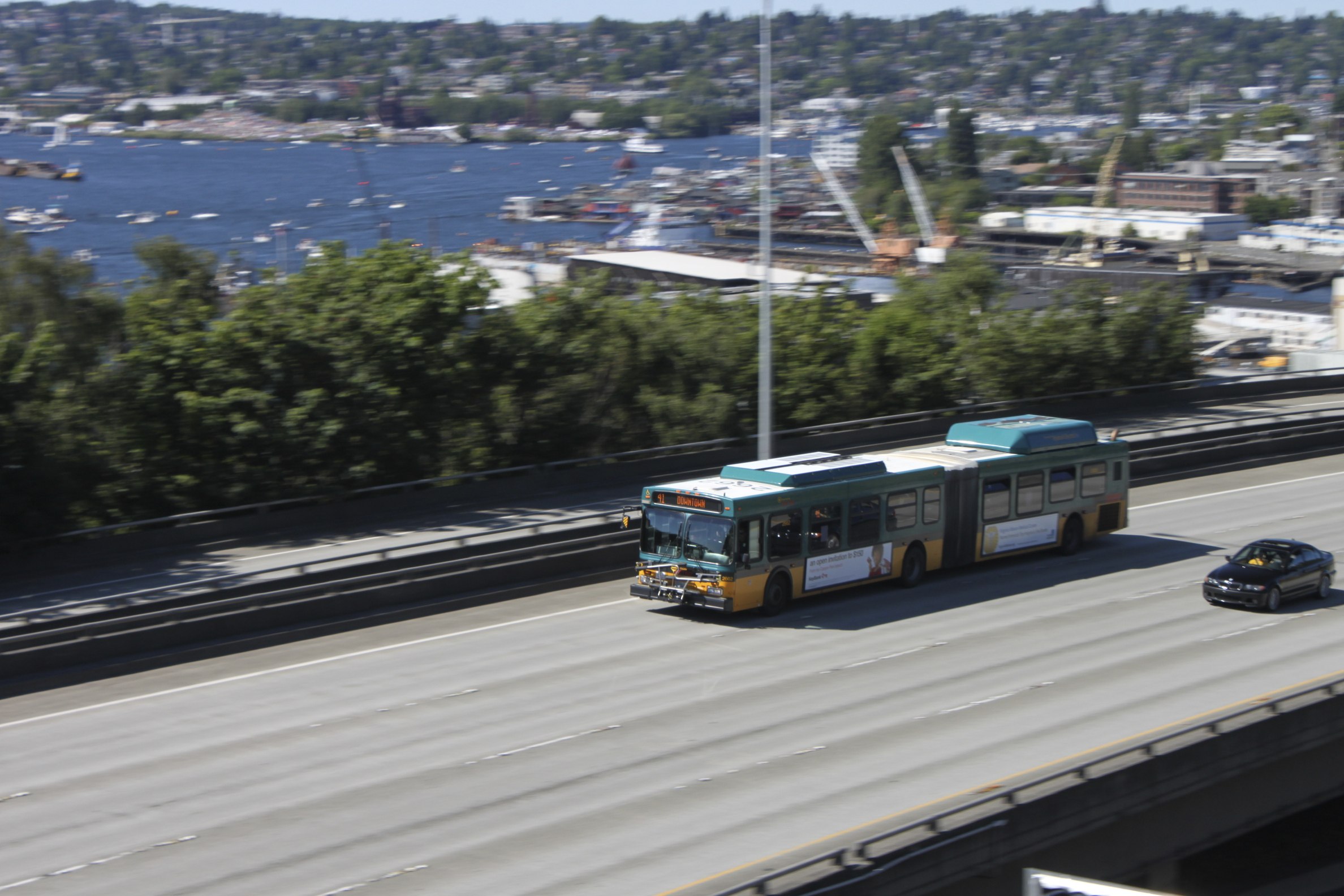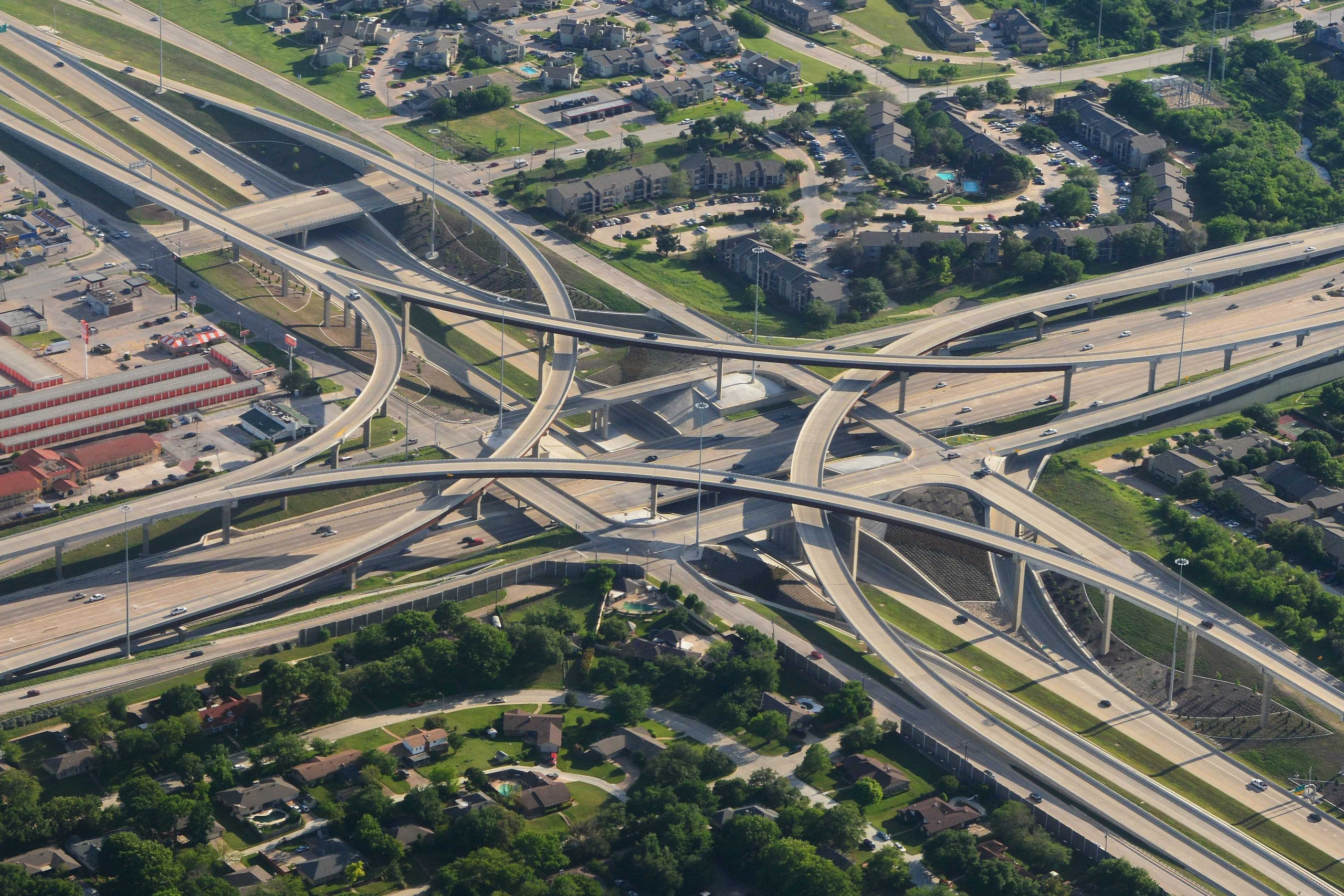
Who Pays for Roads?
How the "Users Pay" Myth Gets in the Way of Solving America's Transportation Problems

Downloads
Many Americans believe that drivers pay the full cost of the roads they use through gas taxes and other user fees. That has never been true, and it is less true now than at any other point in modern times.
Today, general taxes paid by all taxpayers cover nearly as much of the cost of building and maintaining highways as the gas tax and other fees paid by drivers. The purchasing power of gasoline taxes has declined as a result of inflation, improved vehicle fuel economy, and the recent stagnation in driving. As a result, so-called “user fees” cover a shrinking share of transportation costs.
The time has come for policy-makers to recognize something that has been true for years, but is especially true today: we all pay for America’s roads.
Short-term funding patches – even modest increases in the gas tax – won’t change that. Nor will they be enough to enable America to achieve a 21st century transportation system. Doing so will require bold rethinking of how we raise transportation money and how we spend it in the years to come.
Roads don’t pay for themselves.
- Nearly as much of the cost of building and maintaining highways now comes from general taxes such as income and sales taxes (plus additional federal debt) as comes from gasoline taxes or other “user fees” on drivers. General taxes accounted for $69 billion of highway spending in 2012.
- Roads pay for themselves less and less over time. In the 1960s and early 1970s, gas taxes and other fees on drivers covered more than 70 percent of the costs of highway construction and maintenance. The share of transportation costs covered by gasoline taxes is likely to continue to decline as a result of inflation, more fuel-efficient cars, and slower growth in driving.
All of us bear the costs of roads.
- Aside from gas taxes and individuals’ expenditures for their own driving, U.S. households bear on average an additional burden of more than $1,100 per year in taxes and other costs imposed by driving. Including:
- An estimated $597 per U.S. household per year in general tax revenue dedicated to road construction and repair.
- Between $199 and $675 per household per year in additional tax subsidies for driving, such as the sales tax exemption for gasoline purchases in many states and the federal income tax exclusion for commuter parking benefits.
- An estimated $216 per year in government expenditures made necessary by vehicle crashes, not counting additional, uncompensated damages to victims and property.
- Approximately $93 to $360 per household in costs related to air pollution-induced health damage.
Governments spend more non-user tax dollars on highways than on transit, bicycling, walking and passenger rail travel, combined.
- Transit ($43.3 billion in government capital and operating funding), bicycling and pedestrian programs ($821 million in federal funding), and passenger rail ($1.8 billion in government funding) all receive less direct taxpayer support than highways.
People who walk and bicycle pay their fair share for use of the transportation system.
- Most walking and bicycling takes place on local streets and roads that are primarily paid for through property taxes and other general local taxes.
- Walking and bicycling inflict virtually no damage on roads and streets, and take up only a tiny fraction of the road space occupied by vehicles. Bicyclists and pedestrians likely pay far more in general taxes to facilitate the use of local roads and streets by drivers than they receive in benefits from state and federal infrastructure investment paid for through the gas tax.
Americans lead increasingly multi-modal lives. Most are not “drivers” or “non-drivers” but people who use a variety of modes and pay for transportation in a variety of ways.
- Roughly two-thirds of American drivers also bicycle, walk or use public transit during the course of a given week, with young people more likely to be multimodal than older generations.
- Nearly two-thirds of Americans believe it is appropriate to use gasoline tax revenue to support public transportation. And several recent opinion polls suggest that Americans believe that the nation should give greater priority to transit, bicycling and walking in transportation spending.
Solving the transportation funding crisis may or may not require higher gas taxes. It certainly requires policy-makers to use fresh thinking. They can begin by taking three steps:
1) Recognize the reality that all Americans now bear the cost of roads by making transportation policy choices based on which investments deliver the most benefits for the public, regardless of mode. The needs of Americans who mainly ride transit, bicycle, walk or use other transportation services should bear no less weight than the needs of automobiles in transportation decision-making.
2) Treat revenue sources and investment decisions as separate. Transportation agencies have often prioritized new highways of dubious merit over pressing maintenance and repair projects, as well as important investments in transit and other modes of transportation. By subjecting all transportation spending to rigorous evaluation and prioritization – regardless of the source of revenue – public officials can ensure that taxpayer money is spent most effectively.
3) Move toward a sensible pricing system for transportation. Taxes on drivers have been seen primarily as a way to raise money for transportation. But they can fill a more important purpose by being used to recoup some of the costs drivers impose on society and improve the efficiency of the transportation system. Congestion pricing, parking pricing, pollution-based charges and similar charges can encourage transportation choices that deliver the greatest benefits to or impose the least costs on society – even if every penny of revenue from those fees is returned to taxpayers or used for purposes other than transportation.
Image: Brendan Beale, aerial view of the I-95/I-695 interchange in Maryland, USA, via Unsplash.
Topics
Authors
Tony Dutzik
Associate Director and Senior Policy Analyst, Frontier Group
Tony Dutzik is associate director and senior policy analyst with Frontier Group. His research and ideas on climate, energy and transportation policy have helped shape public policy debates across the U.S., and have earned coverage in media outlets from the New York Times to National Public Radio. A former journalist, Tony lives and works in Boston.
Gideon Weissman
Former Policy Analyst, Frontier Group
Find Out More

Less driving is possible

Shifting Gears

Transform Transportation

